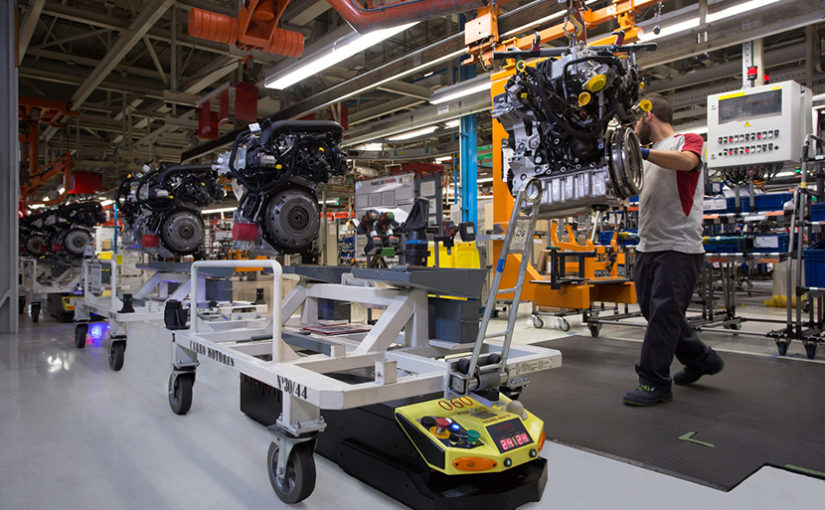
Seat shows off intralogistics robots at Spain factory
Automaker Seat, which is part of the Volkswagen Group, has been showing off its autonomous and collaborative intralogistics robots at its factory in Martorell, in Spain.
The company uses 125 automated guided vehicles at the Martorell facility, and the robots share the workspace with 7,000 human employees.
As such, Seat – and others – call these vehicles collaborative robots, because they work alongside humans (video below).
The internal logistics robots were manufactured by a company called Kivnon. Other robotic and autonomous logistics vehicles at the Martorell plant are from Aristeril and Rari.
Seat says the intelligent robots transport 23,800 parts every day and cover a distance of 436,000 km every year – “equivalent to the distance between Earth and the moon”.
The robot-based transportation system eases and optimises factory workers’ jobs and reduces production time by 25 per cent, says Seat.

The company describes a typical working day with the robots as colleagues. They’re not much good at conversation, but sometimes you just want a bit of peace and quiet anyway.
A blue light goes on at 5 o’clock in the morning in the engines warehouse. It belongs to one of the 125 robots that begins its route in one of the workshops at the Seat factory in Martorell, where it makes up to 2,800 rounds every day.
Seat explains how these mobile robots work.
They scan a barcode to make sure they transport the right part, and a sensor then opens the warehouse door so they can follow their circuit.
This is how some of the 125 AGVs begin their day, routinely crossing paths with each other and with the 7,000 factory workers in what appears to be a fully synchronised dance performance.
The automatic robots transport engines, gearboxes, shock absorbers or door windows, and their individual payload is up to 1,500 kg in weight.

Longer than a trip to the moon
Every year, the AGVs travel over 436,000 km, which is more than the distance between Earth and the Moon.
When following their pre-set paths they know when to stop at a red light or when a worker crosses their path thanks to their 360° perimeter vision.
Navigating within the facility
The AGVs at the Martorell factory follow 40 guide paths set out with magnetic tracks embedded in the floor.
Each route lasts between 1 and 7 minutes.
During this time, the robots follow the steering circuits and automatically reduce their speed in curves so they do not lose stability when carrying heavy loads and are able to maintain a safety distance.
Remote control
Five employees configure, and if necessary, remotely modify the path settings of all the AGVs from a control room.
A centralised server gathers information from the software installed in each robot, and their exact position is displayed with a numerical symbol on the screens in the room.
Intelligence sharing in Industry 4.0
Connectivity technologies of the so-called fourth industrial revolution – often referred to as Industry 4.0 – enables workers to control processes to optimise decision-making and let these collaborative robots perform the most physical and repetitive tasks, says Seat.
